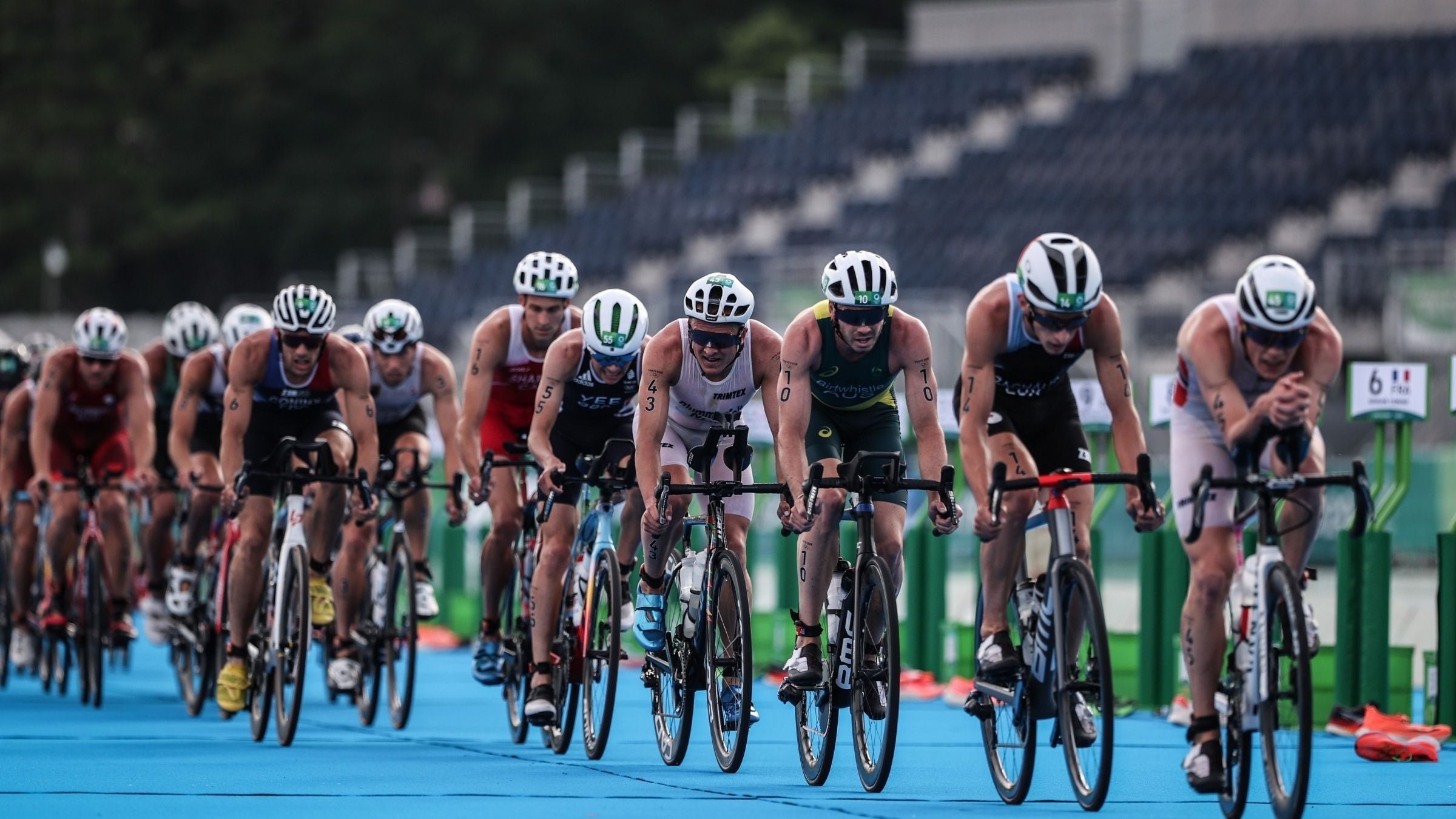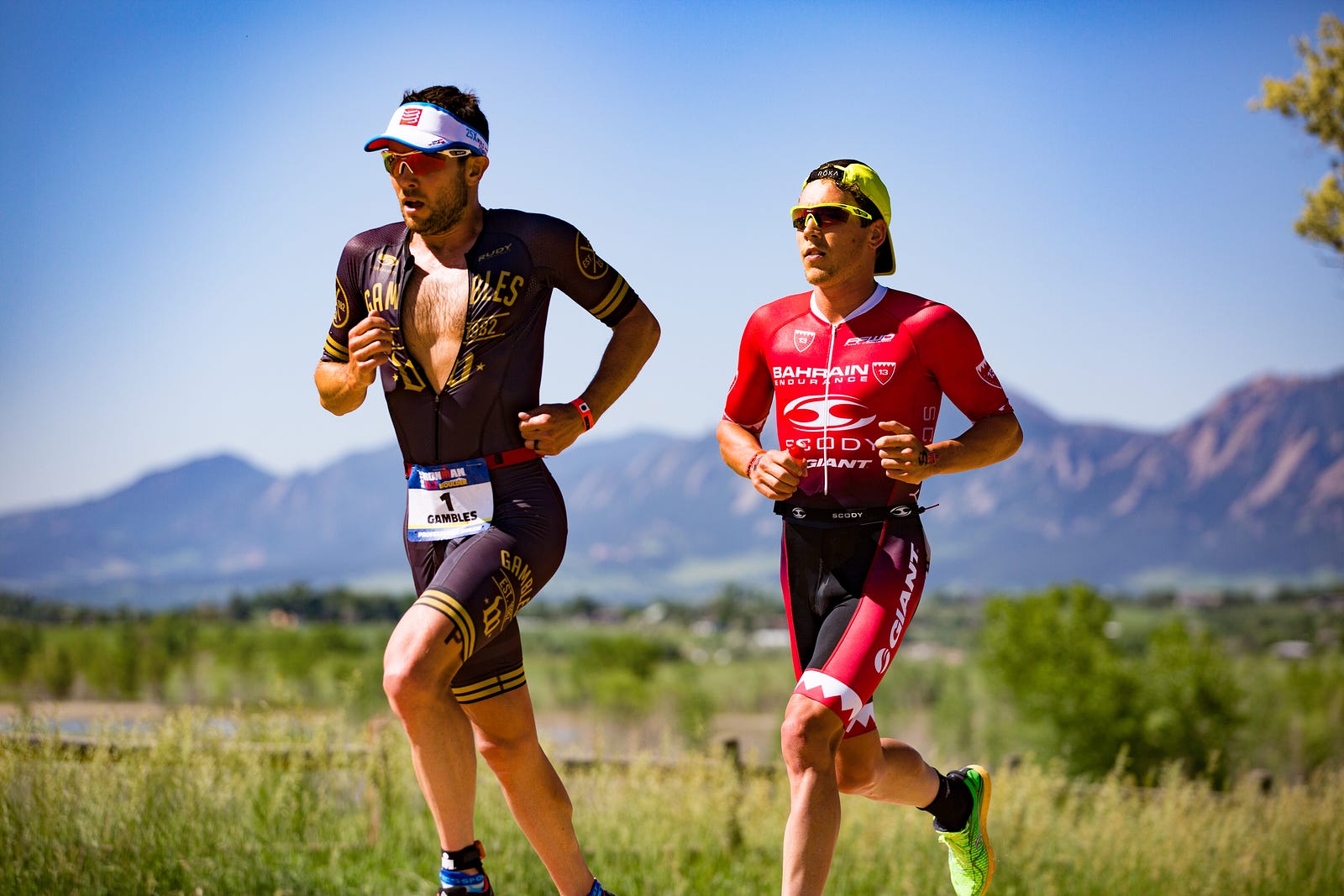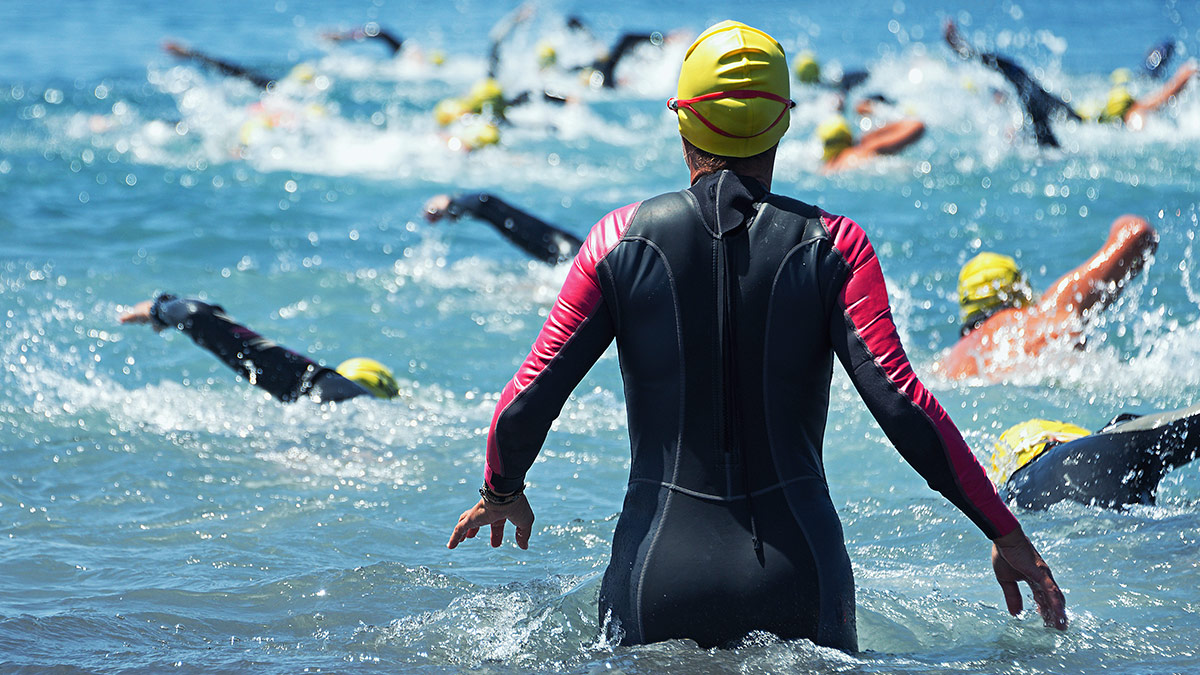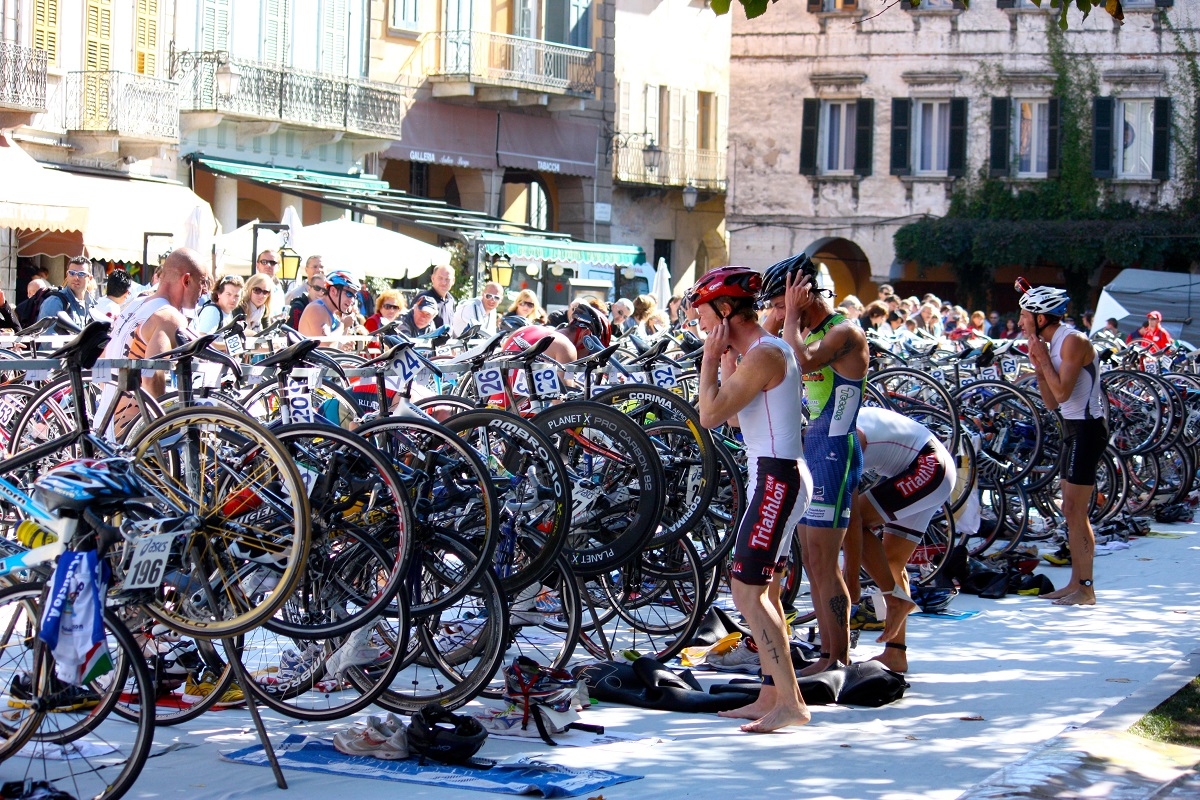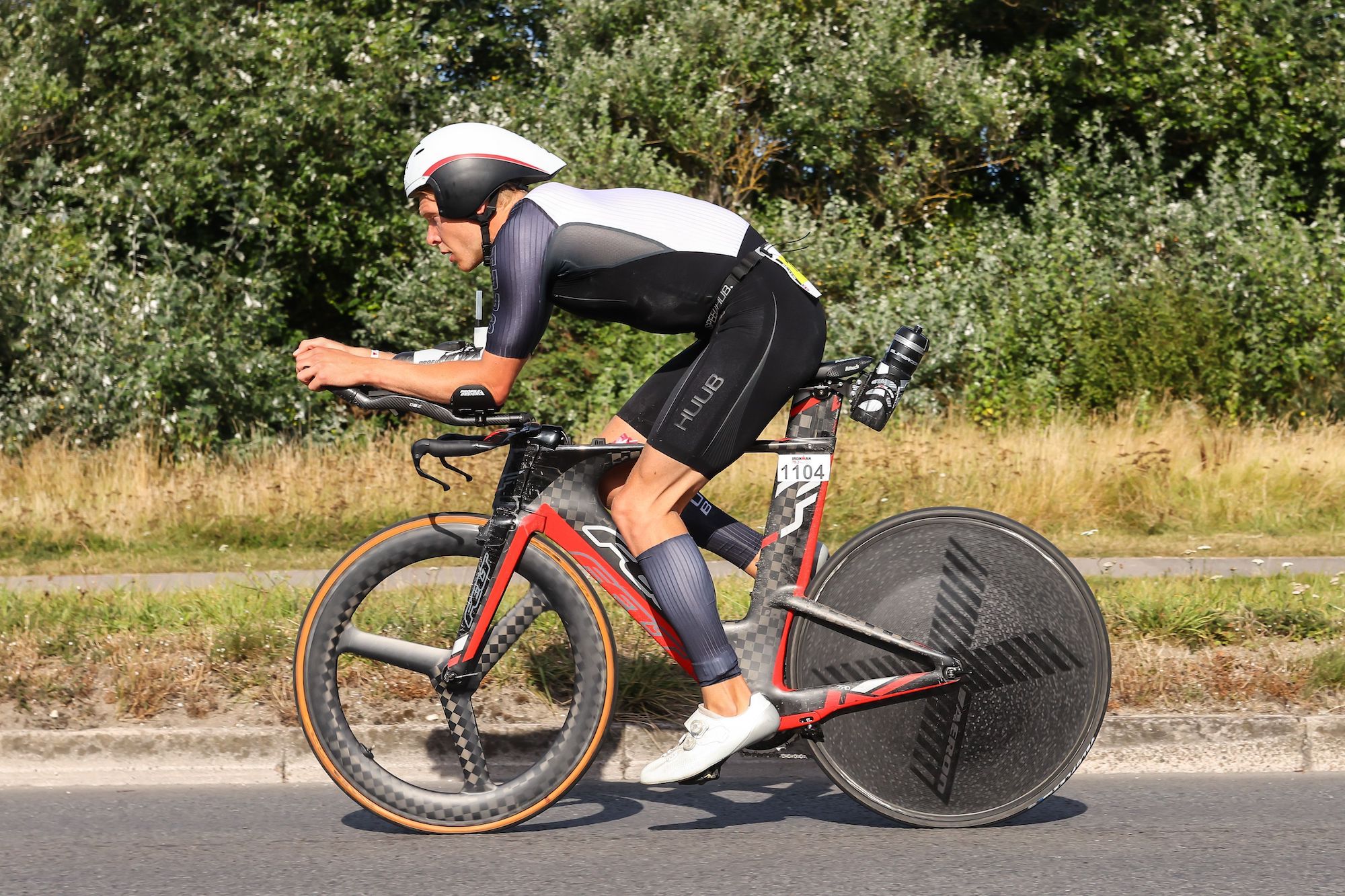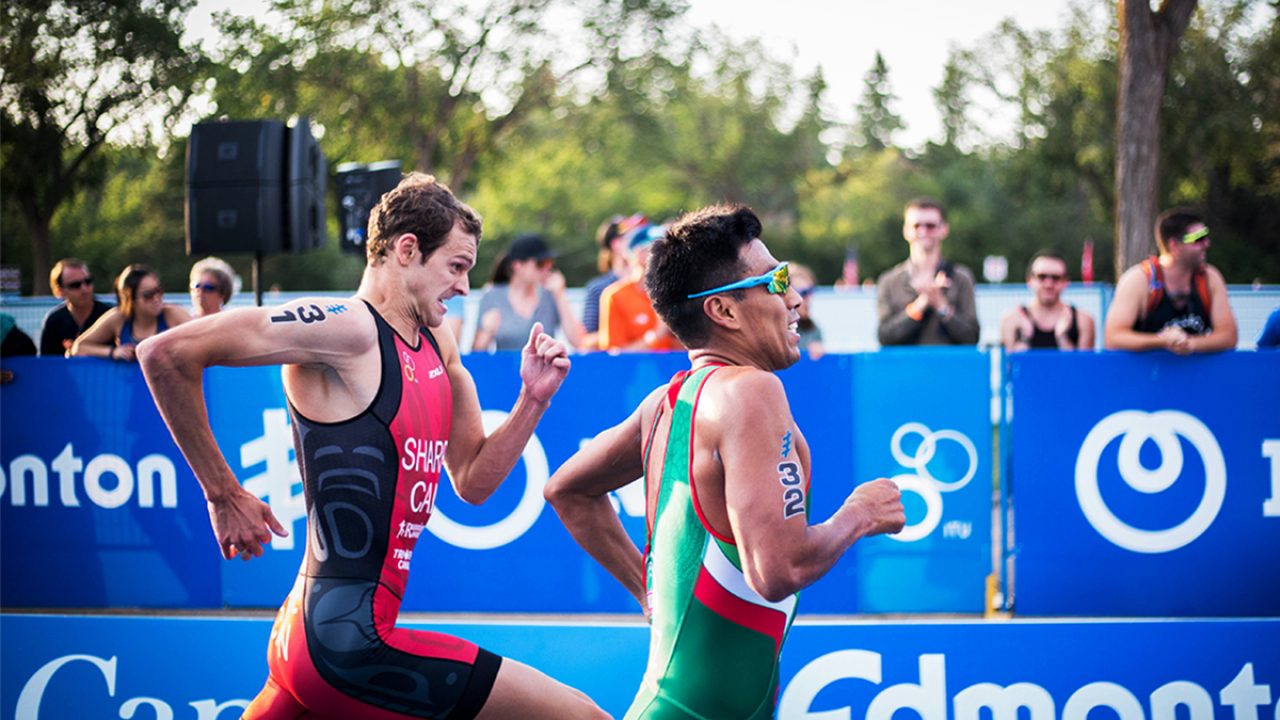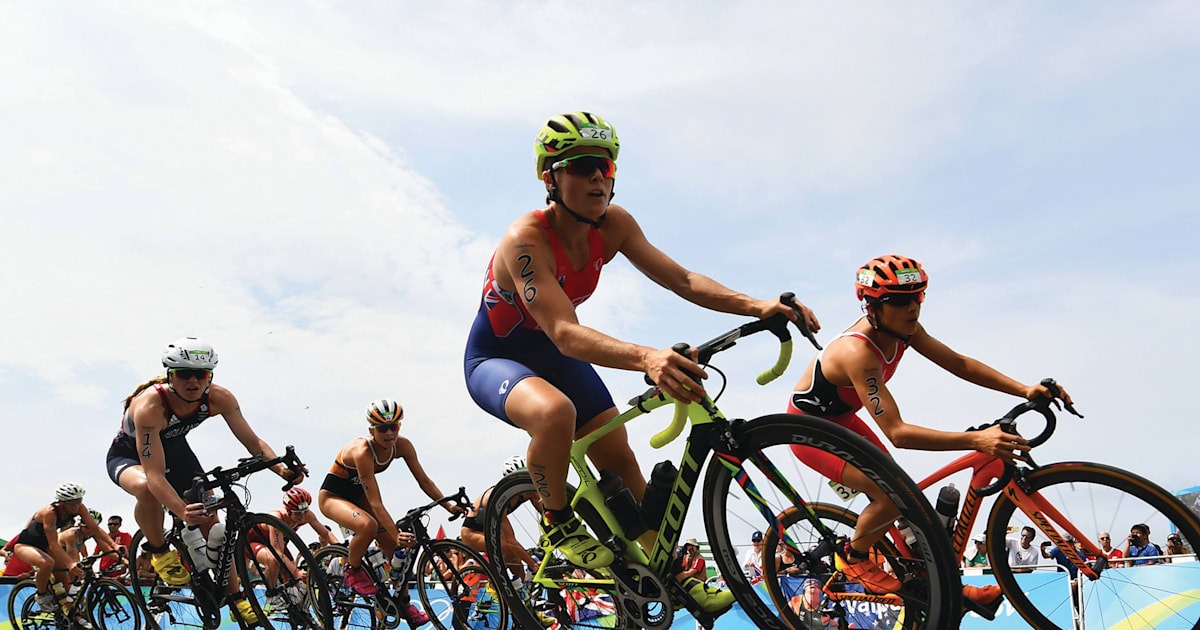

Featured
How Long To Do An Olympic Triathlon
Modified: January 2, 2024
Discover how long it takes to complete an Olympic triathlon. Read our featured guide to understand the time commitment required for this challenging endurance event.
Introduction
Triathlon is an exhilarating and challenging multisport event that combines swimming, cycling, and running into a single race. Among the various distances in triathlon, the Olympic Triathlon stands out as one of the most popular and prestigious races in the world.
As the name suggests, the Olympic Triathlon distance is based on the event held in the Olympic Games, with specific distances set by the International Triathlon Union (ITU). This standardized format has helped establish a benchmark that athletes strive to achieve.
In this article, we will explore the details of an Olympic Triathlon, including its distances and the time it takes to complete the race. Whether you are a beginner looking to participate in your first triathlon or a seasoned athlete aiming to improve your performance, this guide will provide valuable insights to help you reach your triathlon goals.
Additionally, we will discuss the factors that can affect completion time, as well as share some training tips to help you prepare for this demanding event.
So, if you’re ready to dive into the exciting world of Olympic Triathlons, let’s get started!
What is an Olympic Triathlon?
An Olympic Triathlon is a specific distance of the triathlon event that follows the guidelines set by the International Triathlon Union (ITU). This distance was introduced in the Olympic Games in 2000 and has since become a popular race format both in the Olympics and in stand-alone competitions.
The Olympic Triathlon consists of three main disciplines: swimming, cycling, and running. Athletes compete in a sequential order, with the transition from one discipline to the next known as a transition zone.
The swimming leg is the first portion of the race and generally takes place in a body of open water, such as a lake or ocean. Athletes are required to swim a distance of 1.5 kilometers (0.93 miles) in the Olympic Triathlon. This leg can present unique challenges, including navigating through crowded waters and managing environmental conditions.
Following the swim, athletes transition to the cycling leg. In the Olympic Triathlon, the cycling portion involves covering a distance of 40 kilometers (24.85 miles). The course is typically conducted on roads that are closed to traffic, ensuring the safety of the participants. Cyclists must use their endurance and speed to tackle various terrains and overcome any potential obstacles on the course.
Once the cycling leg is completed, the athletes transition again, this time to the final discipline: running. In the Olympic Triathlon, participants are required to complete a 10-kilometer (6.21 miles) run. This leg tests the athletes’ physical and mental stamina, as they push themselves to maintain a steady pace and conquer fatigue accumulated from the previous swimming and cycling stages.
It’s worth noting that the order of the disciplines remains consistent in Olympic Triathlons, with swimming first, followed by cycling, and then running. The race’s sequence adds an exciting dynamic, as athletes must transition efficiently between each discipline to maintain their momentum and optimize their overall race time.
Overall, an Olympic Triathlon challenges athletes to showcase their endurance, speed, and versatility in multiple athletic disciplines. It requires a balance of physical fitness, mental fortitude, and strategic planning to excel in this competitive event.
Breakdown of Olympic Triathlon Distances
The Olympic Triathlon follows a specific distance format set by the International Triathlon Union (ITU). In this section, we will break down the distances of each discipline in an Olympic Triathlon.
1. Swimming: The swimming leg in an Olympic Triathlon consists of a 1.5-kilometer (0.93 miles) swim. Athletes start the race by plunging into open water, typically a lake or ocean, and must navigate the course marked by buoys. This leg requires not only physical endurance but also proficiency in swimming techniques to maneuver through the water efficiently.
2. Cycling: Following the swimming leg, participants transition to the cycling stage. In an Olympic Triathlon, the cycling distance is 40 kilometers (24.85 miles). Athletes hop onto their bikes and embark on a closed-road course. This leg demands excellent bike handling skills, as well as the ability to maintain a consistent pace and adapt to different terrains and elevations.
3. Running: The final stage of the race is the running leg. In an Olympic Triathlon, athletes must complete a 10-kilometer (6.21 miles) run. This segment requires mental and physical endurance, as fatigue sets in from the previous swimming and cycling stages. Runners must find their stride and maintain a steady pace to cross the finish line.
It is important to note that these distances are standardized across all Olympic Triathlons, ensuring fairness and providing athletes with a benchmark to measure their performance against fellow competitors. The combination of different distances in each discipline makes the Olympic Triathlon a true test of overall endurance and athleticism.
Understanding the breakdown of the distances in an Olympic Triathlon is fundamental for athletes to plan their training and develop strategies for each stage. By analyzing and familiarizing themselves with these distances, athletes can optimize their performance and strive for personal records in their upcoming races.
Training for an Olympic Triathlon
Preparing for an Olympic Triathlon requires a well-structured training plan that focuses on building endurance, improving technique, and maximizing performance in each discipline. Here are some key considerations when training for an Olympic Triathlon:
1. Establish a training schedule: Consistency is crucial in triathlon training. Create a schedule that allows for an appropriate balance between each discipline. Aim for a gradual increase in training volume and intensity to avoid overexertion and reduce the risk of injury.
2. Divide your training into phases: Implement a periodization approach to your training, which involves dividing your training into distinct phases. These phases can include base training, where you build a solid foundation of endurance and aerobic capacity, and specific training, where you focus on improving performance in each discipline.
3. Include brick workouts: Brick workouts involve combining two disciplines back-to-back, such as a swim followed immediately by a bike ride or a bike ride followed by a run. These workouts help your body adapt to the transitions between disciplines, simulating race conditions.
4. Work on technique: Improving technique in swimming, cycling, and running can significantly enhance your performance. Consider working with a coach or joining a triathlon training group to receive guidance on proper form and technique for each discipline.
5. Train for race-specific conditions: If possible, incorporate training sessions that mimic the course conditions of your target race. This can include practicing open water swims, hilly cycling routes, or running on terrain similar to the race course.
6. Include strength and cross-training: Strengthening your muscles and improving overall fitness is important for injury prevention and performance. Incorporate strength training exercises, such as weightlifting or bodyweight exercises, and consider cross-training activities like yoga or Pilates to improve flexibility and balance.
7. Don’t forget about rest and recovery: Adequate rest and recovery are essential to prevent overtraining and promote muscle repair. Schedule regular rest days in your training plan and prioritize getting enough sleep each night.
Remember, every athlete is unique, and it’s important to tailor your training plan to your individual needs and goals. Consulting with a qualified coach or seeking guidance from experienced triathletes can also help ensure you have a well-rounded and effective training program.
How Long Does it Take to Complete an Olympic Triathlon?
The time it takes to complete an Olympic Triathlon varies depending on several factors, including an athlete’s fitness level, experience, and race conditions. On average, the completion time for an Olympic Triathlon ranges from 2.5 to 4.5 hours.
In terms of individual discipline times, the swimming leg typically takes around 20 to 30 minutes for most athletes. However, this can vary significantly depending on swim ability, water conditions, and the course layout.
The cycling leg is the longest portion of the race, taking athletes around 1 to 2 hours to complete. Factors such as the course profile, wind conditions, and the athlete’s cycling fitness and skill level influence the duration of this leg.
The running leg, which is the last part of the Olympic Triathlon, usually takes 40 minutes to 1 hour to finish. This segment can be particularly challenging as fatigue sets in from the preceding swim and bike stages. Athletes need to maintain a steady pace and mental focus to complete the race strongly.
It’s important to note that the completion times mentioned are general estimates and can vary among athletes. Elite and professional triathletes can complete an Olympic Triathlon in under 2 hours, while beginners or individuals who are less experienced may require more time to finish.
It’s also worth mentioning that the course itself can impact completion times. Factors such as the terrain, elevation changes, heat, humidity, and wind can all play a role in how long it takes to complete an Olympic Triathlon. Each course presents unique challenges that athletes must adapt to during their race.
Additionally, it’s essential to set realistic goals based on your current fitness level and progress in training. As you improve your fitness, technique, and race strategy, you can work towards shaving off time from your previous performances.
Ultimately, completing an Olympic Triathlon is a personal achievement regardless of the time it takes. The focus should be on setting goals, challenging yourself, and enjoying the journey of training and participating in this demanding and rewarding multisport event.
Factors Affecting Completion Time
The completion time of an Olympic Triathlon can be influenced by various factors. Understanding these factors can help athletes plan their strategies, set realistic expectations, and make adjustments during the race. Here are some key factors that can affect completion time:
1. Athlete’s Fitness Level: The fitness level of the athlete plays a significant role in determining the completion time. Athletes who have trained consistently and have a higher level of endurance and fitness are likely to complete the race faster.
2. Experience: Triathlon experience can also impact completion time. Beginner triathletes may take longer to navigate transitions, adapt to race conditions, and manage their energy levels throughout the race compared to more experienced competitors.
3. Course Terrain: The course terrain, including the elevation profile and surface conditions, can significantly affect completion time. Hilly or challenging terrain can slow down athletes, while a flatter course can lead to faster times.
4. Weather Conditions: Weather conditions such as temperature, wind, and humidity can impact race performance. Hot and humid conditions can increase fatigue, while strong winds can affect cycling speed and require more effort from the athletes.
5. Swim Conditions: Open water swim conditions, such as water temperature, current, and waves, can impact swim times. Rough water or unfavorable conditions may slow down swimmers and require additional effort to navigate through the course.
6. Drafting: Drafting, particularly in the cycling leg, can have a significant impact on completion time. Drafting involves closely following another cyclist to reduce wind resistance. Athletes who draft effectively may experience faster cycling times.
7. Transition Efficiency: The time spent in transitions (changing from one discipline to another) can add up and affect the overall completion time. Efficient transitions, including quickly changing gear, can help athletes save time and maintain their momentum throughout the race.
8. Mental Resilience: Mental resilience and race strategy can impact completion time. Athletes who can stay focused, maintain a positive mindset, and execute their race plan are more likely to achieve faster times.
It’s important to remember that these factors can vary from race to race and from athlete to athlete. Each participant will have their own unique combination of strengths and challenges. By recognizing these factors and adapting to them during training and on race day, athletes can achieve their best possible completion time in an Olympic Triathlon.
Tips for Improving Triathlon Performance
Improving performance in a triathlon requires a combination of training, strategy, and mental preparation. Here are some tips to help you enhance your triathlon performance:
1. Follow a structured training plan: Develop a training plan that includes a mix of endurance, speed, and technique-focused workouts for each discipline. Consistency is key, so aim for regular training sessions and gradually increase your training volume and intensity over time.
2. Focus on efficient transitions: Practice transitioning between disciplines to minimize time spent in transition areas. Lay out your gear in a logical order, rehearse your transition routine, and find ways to streamline the process. Every second counts, so optimize your transitions for maximum efficiency.
3. Work on your weaknesses: Identify areas where you need improvement and dedicate extra training time to those disciplines. By addressing your weaknesses, you can make significant progress and become a well-rounded triathlete.
4. Incorporate brick workouts: Include brick workouts in your training routine, combining two disciplines back-to-back. This helps your body adapt to the transition between disciplines and improves overall race performance.
5. Practice open water swimming: If your race involves an open water swim, make sure to practice in similar conditions. Practice navigation, sighting, and swimming in a group to better prepare for the challenges of open water swimming.
6. Improve your cycling skills: Develop good bike handling skills to confidently navigate various terrains and conditions. Practice climbing, descending, cornering, and riding in different gears to improve your efficiency and speed on the bike.
7. Build mental resilience: Mental preparation is just as important as physical training. Develop mental resilience by visualizing race scenarios, practicing positive self-talk, and learning to manage discomfort and fatigue during training.
8. Pay attention to nutrition and hydration: Proper nutrition and hydration are essential for optimal performance. Fuel your body with balanced meals and adequate hydration before, during, and after training sessions. Practice your race day nutrition strategy in your training to avoid any surprises on race day.
9. Get enough rest and recovery: Rest and recovery are vital for injury prevention and performance improvement. Incorporate rest days into your training plan, prioritize quality sleep, and consider other recovery techniques such as foam rolling, stretching, and massage.
10. Seek guidance from experts: Consider working with a triathlon coach or seeking guidance from experienced triathletes. They can provide valuable insights, personalized training plans, and help you fine-tune your technique.
Remember, improving performance takes time, patience, and consistent effort. Set realistic goals, celebrate small victories along the way, and enjoy the journey of becoming a better triathlete.
Conclusion
Participating in an Olympic Triathlon is an incredible athletic endeavor that challenges athletes to excel in swimming, cycling, and running. By understanding the distances, training effectively, and considering the factors that affect completion time, athletes can set themselves up for success. Implementing the tips to improve triathlon performance can help individuals reach their goals and enhance their overall performance.
An Olympic Triathlon is not merely a test of physical endurance but also a mental battle. Athletes must push themselves to overcome obstacles, fatigue, and the desire to quit. It requires mental resilience, strategic planning, and a positive mindset to perform to the best of one’s abilities.
Whether you’re a beginner starting your triathlon journey or a seasoned athlete aiming to reach new heights, the key to success lies in consistent training, proper technique, race strategy, mental preparation, and dedication. Enjoy the process, learn from each experience, and continuously strive for personal improvement.
As you pursue your goals in the world of triathlons, always remember that completion time is not the sole measure of success. Each step taken, each milestone achieved, and the personal growth experienced throughout the journey is what truly matters.
So, lace up your running shoes, hop on your bike, and dive into the waters with determination. Embrace the challenge, relish in the adventure, and savor the triumphs throughout your Olympic Triathlon journey.


